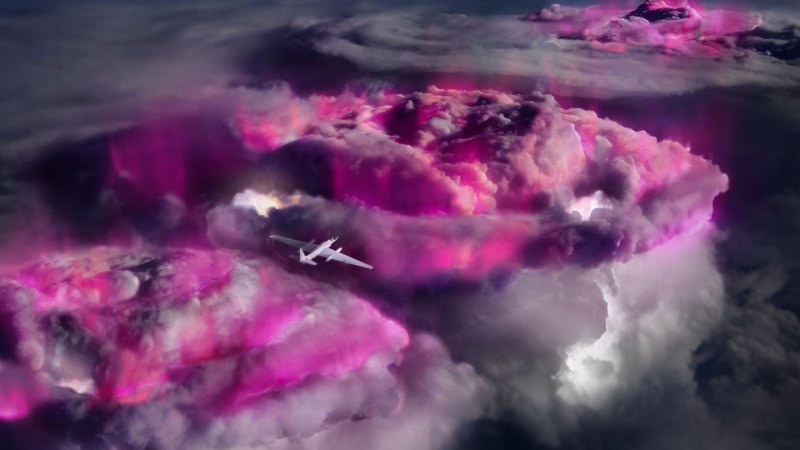
Above the cloud tops, storms blow with a complex and frenetic light show of high-energy radiation.
A view from a refurbished spy plane flying 20 kilometers up revealed storms glowing and flickering in gamma rays, high-energy light invisible to the eye. Ten flybys of the aircraft, NASA’s ER-2 aircraft, captured the flickering of gamma-ray bursts on a variety of time scales and intensities, suggesting that the emissions are more complex and common than previously thought. And the study revealed a whole new type of gamma-ray burst that the researchers called a quivering gamma-ray flash.
“I’m absolutely amazed,” says physicist David Smith, of the University of California, Santa Cruz, who was not involved in the research. It’s the most important new data in the field in more than a decade, he says.
Scientists knew of two main types of gamma-ray emissions from the storm. Short, intense bursts, called terrestrial gamma-ray flares, are so bright they can be seen from space and last only fractions of a millisecond (SN: 1/10/23). Then there are longer, fainter emissions called gamma-ray bursts. Scientists saw both during the flights.
The flashes, the scientists found, were unexpectedly continuous and widespread. They persisted for hours, covered thousands of square kilometers and were seen on nine out of 10 aircraft flights, physicist Nikolai Østgaard and colleagues report on Oct. 3. Nature.
“It’s surprising,” says physicist Ningyu Liu of the University of New Hampshire in Durham, who was not involved in the work.
Moreover, the gamma-ray flashes were not static, as previously thought, but were constantly simmering, repeatedly brightening and darkening on time scales of seconds. “Big storms are blowing. It’s like a boiling pot,” says Østgaard, from the University of Bergen in Norway.
Loaded with sensors to detect gamma rays, radio waves, visible light and more, the plane flew over storms in the Caribbean and Central America. Cruising at an altitude about twice that of commercial flights, the plane had a front-row seat for the fireworks. And because the plane was rigged to send data back to the ground in real time, the researchers could direct the plane’s pilot back to regions bouncing with gamma rays.
The flights also found ground-based gamma-ray flares, including ones too faint to be seen by satellites in space, the team reported Sept. 7 in Geophysical Research Letters. This suggests that previous satellite observations missed many ground-based gamma-ray flares, making them more common than previously thought.
Thunderstorms produce gamma rays when electrons are accelerated in strong electric fields that are created within clouds (SN: 15.3.19). These electrons produce more electrons, and so on. When the electrons in this avalanche collide with air molecules, gamma rays result. But even though this process is well understood, scientists don’t understand the details behind the different types of gamma-ray bursts, or how they are related.
The newly discovered gamma-ray flares may be a missing link between terrestrial gamma-ray flares and gamma-ray flares, as their brightness and duration fell between those of the other two classes. Like high-energy strobe lights, these bursts consisted of short pulses of gamma rays that repeated over tens to hundreds of milliseconds, the team reported in a second paper in Nature.
Additionally, many of the gamma-ray bursts were followed by a type of burst called a narrow bipolar event, which was then followed by lightning. This could mean that gamma-ray bursts help initiate lightning, a process that is not yet understood (SN: 10/21/11).
Gamma rays may also be involved in limiting how strong electric fields can get into thunderstorms, says co-author Steven Cummer, an electrical engineer at Duke University. This means that “this whole process of generating gamma rays that was interesting and unusual before now appears to be quite central to all atmospheric electricity.”
#Storms #ignite #boiling #pot #gamma #rays
Image Source : www.sciencenews.org